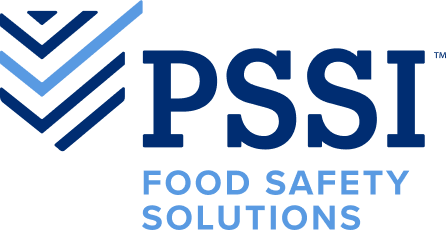A customer faced a persistent challenge with ATP failure rates at three of their facilities. Many food companies use ATP testing as part of their sanitation verification program. It is an important tool to verify that surfaces have been effectively cleaned. A high ATP reading indicates that the surface is not clean, and additional cleaning is needed to keep microbes from growing and prevent contamination.
Challenge with ATP Swab Results
The customer identified consistent ATP failure rates at three of their facilities, posing a potential threat to food safety. Each of these facilities was near or at the goal of a max 5% failure rate, with one having a 12+ % failure rate in ATP swabs.
Some of the challenges that contributed to the ATP failure rates were staffing shortages and procedural lapses. The most noticeable were in the eight-step cleaning process, especially the lack of hand scrubbing and overspray. Additionally, we identified many hard-to-clean areas across the facilities, indicating the need for a holistic approach rather than focusing on isolated issues in specific zones.
Solving Customer Problem with FAST Team
Recognizing the urgency of the challenge, PSSI deployed our Field Audit & Support Team (FAST) to conduct follow-up-focused assessments at all sites, analyze ATP trends, and identify contributing factors to the failed areas. An immediate action plan was implemented with several key tactics to address sanitation challenges.
These tactics include:
Enhanced Communication
PSSI elevated daily communication channels, aiming to identify areas for improvement quickly. This proactive approach ensured issues were promptly addressed, enhancing overall sanitation effectiveness.
Process Improvements
Implementing PSSI’s 8-Steps of Sanitation, we focused on minimizing cross-contact during condensation removal, ensuring thorough attention to detail in every sanitation step. Additionally, we established a dedicated PSSI pre-op inspection team to enhance our verification process, adding an additional layer of protection. Furthermore, we evaluated our sanitation chemistry and customized it to meet the customer’s unique needs and pain points. Another significant improvement was increasing staffing and attendance management efforts, particularly boosting hand scrubbing in critical zones and enhancing overall cleanliness standards.
Equipment Maintenance
Collaborating closely with the QA team, we ensured correct sample collection timings, guaranteeing the accuracy of our sanitation processes. Additionally, we thoroughly assessed tools and equipment, determining those requiring maintenance or replacement to achieve optimal results. These enhancements to equipment maintenance ensure that all equipment remains in excellent condition, assisting in efficient operations and enhanced cleanliness.
Following the action plan, two facilities consistently achieved the target pre-op results within 30 days and were successfully de-escalated from focus. A specialized “Advanced Problem-Solving” team was initiated specifically to concentrate on the third facility. PSSI’s relentless efforts paid off, reducing the facility’s failure rate to 10.4% within another 30 days and achieving an impressive 1% failure rate.
Achieving Results with Service Excellence
The positive momentum extended across all sites, with notable improvements and sustained results. PSSI consistently achieved or surpassed the 5% target across all facilities, demonstrating progress in improving food safety outcomes.
The customer acknowledged the impressive improvements made by the PSSI team, leading to the removal of these plants from their focus. This recognition serves as a testament to PSSI’s dedication, collaborative approach, and effective problem-solving strategies committed to service excellence.
